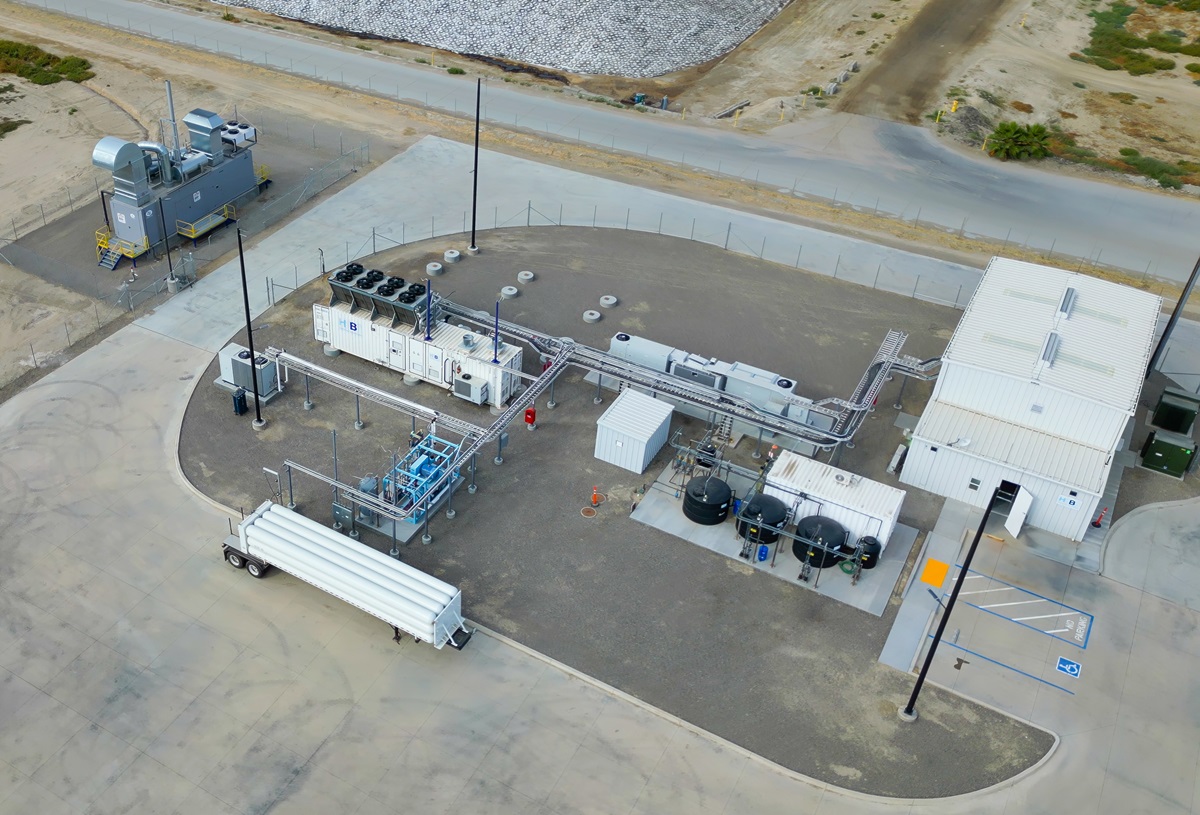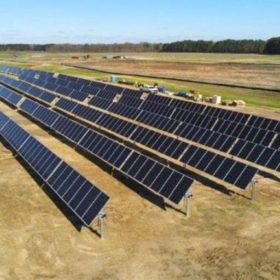Green hydrogen solutions provider H2B2 Electrolysis Technologies is working on the largest operational green hydrogen production plant to date in North America, which will be powered entirely by renewable energy.
The project – called SoHyCal – is located in Fresno, California, and is currently fully operational in its first phase, in which it is producing up to one ton of hydrogen per day using biogas and electrolysis technology.
In its second phase, it will transition to also using solar energy from a nearby photovoltaic plant, and is expected to scale up to producing up to three tons of hydrogen per day – enough to power 210,000 cars or 30,000 city buses every year. It will also continue using biogas to produce hydrogen in this phase. The facility is expected to get to this point by the second quarter of 2024.
Both the biogas and solar energy sources are adjacent to the site, and directly connected to it, Pedro Pajares, CEO of H2B2 USA, told pv magazine USA. SoHyCal is a behind-the-meter facility.
In May, H2B2 announced that it had entered into an agreement with RMG Acquisition Corp. III, a special purpose acquisition company, to take the former public. H2B2 was founded in 2016, and while most of its presence is in the U.S. and Europe, it is also expanding in the Latin America and Asia-Pacific regions.
The green hydrogen market is viewed as having significant potential, according to the company, and forecasts indicate it could reach a value of $10 trillion by the end of the decade. The industry’s growth will come from various sectors, including industrial use, transportation, and power generation, the company said.
However, one of the challenges the industry faces is the correct development of infrastructure and financial models to support the hydrogen ecosystem, Pajares said.
In terms of how policymakers could address these challenges, Pajares said they “are taking the right steps to develop both the market and the ecosystem. If any, I would add the legislative needs to keep listening to the private sector as a whole, from producers to consumers to infrastructure and supply chain.”
The Fresno facility has also received regulatory support, including in the form of a $3.96 million grant from the California Energy Commission’s clean transportation program. That funding has been key to getting the plant to its 1 ton-per-day of hydrogen production capacity, and the fuel is being used at hydrogen refueling stations in the San Joaquin Valley and the San Francisco Bay Area.
California regulators have also been providing funding to other players in the hydrogen market. In August, heavy-duty battery and fuel cell vehicle manufacturer Nikola announced it had received $58.2 million in grants from various regulatory agencies – including $41.9 million from the California Transportation Commission and $3.3 million from the California Energy Commission – to build a network of hydrogen refueling stations for heavy-duty trucks.
This content is protected by copyright and may not be reused. If you want to cooperate with us and would like to reuse some of our content, please contact: editors@pv-magazine.com.








By submitting this form you agree to pv magazine using your data for the purposes of publishing your comment.
Your personal data will only be disclosed or otherwise transmitted to third parties for the purposes of spam filtering or if this is necessary for technical maintenance of the website. Any other transfer to third parties will not take place unless this is justified on the basis of applicable data protection regulations or if pv magazine is legally obliged to do so.
You may revoke this consent at any time with effect for the future, in which case your personal data will be deleted immediately. Otherwise, your data will be deleted if pv magazine has processed your request or the purpose of data storage is fulfilled.
Further information on data privacy can be found in our Data Protection Policy.